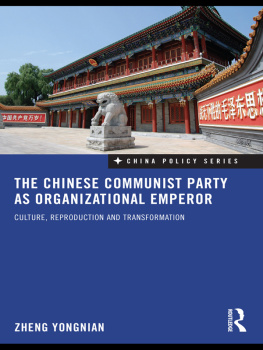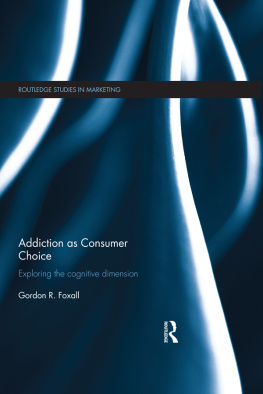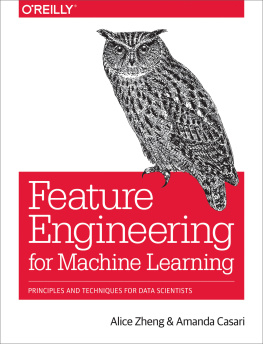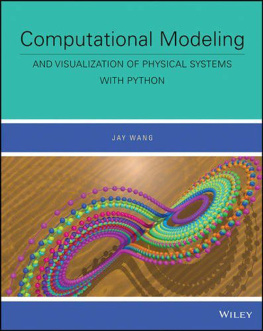Zheng Joyce Wang - Cognitive Choice Modeling
Here you can read online Zheng Joyce Wang - Cognitive Choice Modeling full text of the book (entire story) in english for free. Download pdf and epub, get meaning, cover and reviews about this ebook. year: 2021, publisher: MIT Press, genre: Children. Description of the work, (preface) as well as reviews are available. Best literature library LitArk.com created for fans of good reading and offers a wide selection of genres:
Romance novel
Science fiction
Adventure
Detective
Science
History
Home and family
Prose
Art
Politics
Computer
Non-fiction
Religion
Business
Children
Humor
Choose a favorite category and find really read worthwhile books. Enjoy immersion in the world of imagination, feel the emotions of the characters or learn something new for yourself, make an fascinating discovery.

- Book:Cognitive Choice Modeling
- Author:
- Publisher:MIT Press
- Genre:
- Year:2021
- Rating:5 / 5
- Favourites:Add to favourites
- Your mark:
- 100
- 1
- 2
- 3
- 4
- 5
Cognitive Choice Modeling: summary, description and annotation
We offer to read an annotation, description, summary or preface (depends on what the author of the book "Cognitive Choice Modeling" wrote himself). If you haven't found the necessary information about the book — write in the comments, we will try to find it.
Cognitive Choice Modeling — read online for free the complete book (whole text) full work
Below is the text of the book, divided by pages. System saving the place of the last page read, allows you to conveniently read the book "Cognitive Choice Modeling" online for free, without having to search again every time where you left off. Put a bookmark, and you can go to the page where you finished reading at any time.
Font size:
Interval:
Bookmark:
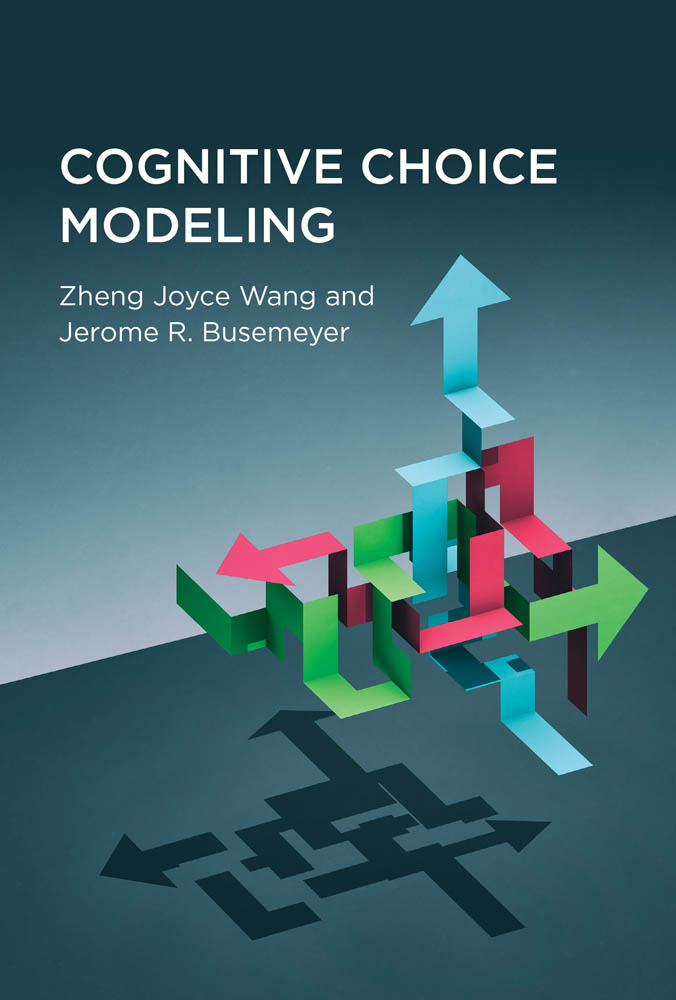
Cognitive Choice Modeling
Zheng Joyce Wang and Jerome R. Busemeyer
The MIT Press
Cambridge, Massachusetts
London, England
2021 The MIT Press
All rights reserved. No part of this book may be reproduced in any form by any electronic or mechanical means (including photocopying, recording, or information storage and retrieval) without permission in writing from the publisher.
Library of Congress Cataloging-in-Publication Data
Names: Wang, Zheng Joyce, author. | Busemeyer, Jerome R., author.
Title: Cognitive choice modeling / Zheng Joyce Wang and Jerome R. Busemeyer.
Description: Cambridge, Massachusetts : The MIT Press, [2021] | Includes bibliographical references and index.
Identifiers: LCCN 2020019868 | ISBN 9780262044967 (hardcover)
Subjects: LCSH: Choice (Psychology)Mathematical models. | Decision makingMathematical models.
Classification: LCC BF611 .W36 2021 | DDC 153.8/3011dc23
LC record available at https://lccn.loc.gov/2020019868
d_r0
This book was a labor of love for Angela
List of Figures
Subjective value v(x) of mileage (x = physical mileage in thousands of miles) determined by v(x) = 1 (x5). Other parametric value functions are possible as well, such as a logarithmic function v(x) = log ( + x).
Crossover interaction effect predicted by the weighted averaging model when the set size is changed.
The utility of money determined by a utility function that is strictly concave produces risk aversion.
Prospect theory value function using = .50 and = 2.
Decision weighting function using = .75.
Illustration of Thurstone choice model. Horizontal axis represents the utility difference, vertical axis represents probability density. Area above the verical line determines probability to choose A. One distribution is shown with a choice pair with high variance, and a second is shown with a choice pair with low variance.
Bivariate joint distributions produced for each option for the triadic choice among options A1, A2, and A3. See color .
Frequency distribution of parameters for Model B obtained by fitting individuals.
Beta distribution using typical parameters for the application used in our analyses.
Posterior marginal distribution of the means for the hyperparameters (w, a, b, and c) used in the parent distribution.
The univariate normal equal variance distribution signal detection model.
Five levels of bias ranging from low (1) to high (5).
ROC curve. Probability of hits plotted as a function of the probability of false alarms, with a different point produced by each location of nine bias conditions.
Z-ROC curve produced by plotting z H as a function of z FA , with a different curve for each signal strength.
Confidence model for six likelihood scores defined by five criteria.
Contour plots of the signal and no signal distributions.
Univariate distribution of evidence produced by the joint distributions for the data shown in . Top panel represents state s, and bottom panel represents state n.
Z-ROC plot of hits and false alarms produced by the distributions of evidence shown in .
Bivariate signal detection model for the rememberknow paradigm of memory recognition. Blue dots represent old item, red dots represent new item. Lines represent decision bounds. See color .
Four types of stimuli are represented by four colors. The two lines divide the space into four categories. See color .
Theoretical implications of the presence of a theoretical property for the observed response relative frequencies derived from GRT.
Basic idea of the sequential sampling choice process. Horizontal axis is time and vertical axis is evidence. Trajectory shows evidence accumulated across time. Top line is bound for choosing R, and bottom line is bound for choosing B.
Twenty sample trajectories of the same process shown in .
Effect of increasing the threshold on the sequential sampling process.
Effect of changing the mean drift rate on the distribution of decision time for each action (d = .50 for lower drift rate, d = .75 for higher drift rate).
Effect of changing the threshold on the distribution of decision time for each action ( = 1 for lower threshold, = 1.5 for higher threshold).
Effect of changing the bias on the distribution of decision time for each action (b = 0 for no bias, b = .2 for red bias).
Quantile probability plot used to evaluate the fit of a diffusion model. See .
Model of binary choice, response time, and later confidence rating. The confidence rating corresponds to the final point on the evidence scale that occurs after postdecision processing indicated by the arrow.
Separate accumulator model for directly rating confidence on a six-point scale. See color .
Continuous response model for judging the probability of an event on a continuous scale ranging from 0100.
Sequential sampling model of binary choice. Time is on the horizontal axis, and preference is on the vertical axis. The upper and lower bounds represent thresholds. The trajectory represents the preference state evolving across time. The vertical line indicates where the process stops and makes a choice.
Choice and response time distribution predicted by DFT. The high curve shows the probability of stopping at time t and choosing red, and the lower curve shows the same for choosing blue. The high curve integrates to equal the choice probability given in the insert, which also shows the mean time to choose each action.
Speedaccuracy trade-off predicted by DFT. The horizontal axis represents the threshold magnitude, and the vertical axis represents the probability of choosing red. The process is initially biased toward blue, but as deliberation time lengthens, the probability for red increases.
Relative frequency of certainty equivalents for gamble A (top) and gamble B (bottom), all produced by the DFT price equivalence model. The title above each panel describes the mean price and probability of choosing each gamble predicted by the model.
MDFT choice process for three alternatives. The horizontal axis represents time steps, the vertical axis represents preference for each action, and the flat horizontal line represents the decision threshold that has to be crossed by one of the preference states so that a choice occurs. In this case, option C first crosses the threshold at a time equal to 150 time steps and is chosen by the decision-maker. See color .
Choice options used to produce choice context effects. Option A is low on quality and high on economics, while option B is high on quality and low on economics. The option lying a bit above and to the left of B produces a similarity effect, the option a bit directly below A produces an attraction effect, and the option between A and B on the diagonal produces a compromise effect.
Illustration of the multistage model. The graph shows a binary choice between the high economic option and the high quality option. Initially, the process attends to the economic attribute and almost hits the threshold, but then a switch in attention occurs, and preference accumulates toward the choice of the high economic option. Eventually, the relative preference reaches the threshold for the high-quality option, which is chosen at time
Font size:
Interval:
Bookmark:
Similar books «Cognitive Choice Modeling»
Look at similar books to Cognitive Choice Modeling. We have selected literature similar in name and meaning in the hope of providing readers with more options to find new, interesting, not yet read works.
Discussion, reviews of the book Cognitive Choice Modeling and just readers' own opinions. Leave your comments, write what you think about the work, its meaning or the main characters. Specify what exactly you liked and what you didn't like, and why you think so.


